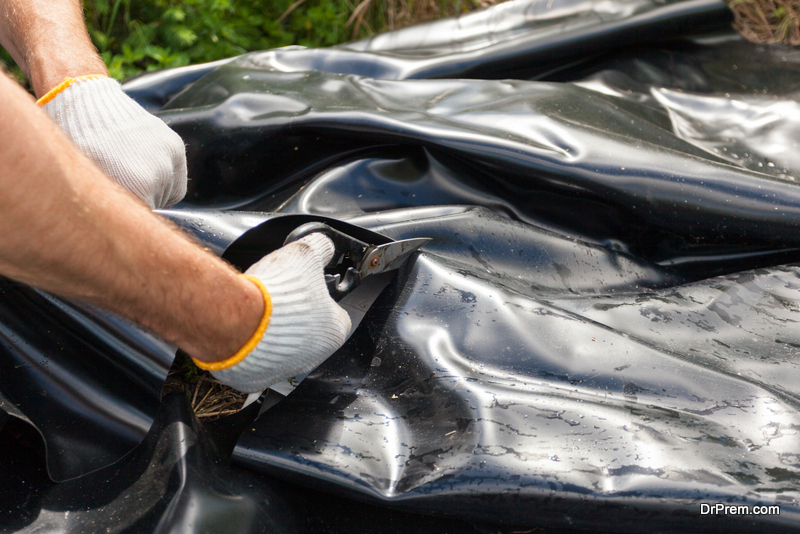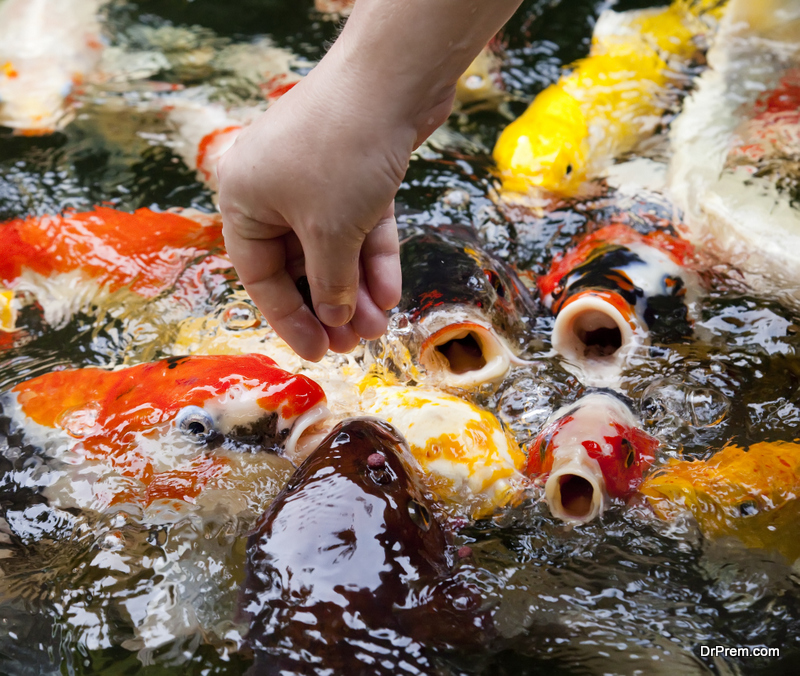Ponds can be a beautiful and entertaining addition to any plot of residential or commercial land. You can use them to beautify your backyard landscape, cultivate fish, or even use them as a makeshift swimming hole.
Because bodies of water are a natural occurrence, it’s tempting to think that ponds are environmentally friendly by default. But if you’re creating one from scratch, or if you’re modifying an existing pond, you’ll need to take a few important precautions to ensure you’re managing it in an environmentally friendly way.
1. Know When to Cover It (and When to Allow Sunlight In)
 Industrial cover systems can be valuable for protecting any body of water. Depending on the circumstances, it could protect your fish and creatures from predators, or prevent debris from falling into the pond. However, it’s also important to leave your pond uncovered most of the time; the algae, other plants, and microorganisms in your pond will likely require ample sunlight to thrive.
Industrial cover systems can be valuable for protecting any body of water. Depending on the circumstances, it could protect your fish and creatures from predators, or prevent debris from falling into the pond. However, it’s also important to leave your pond uncovered most of the time; the algae, other plants, and microorganisms in your pond will likely require ample sunlight to thrive.
2. Include a Circulation System
Most ponds will benefit from the addition of a circulation system. These usually take the form of some kind of pump, designed to circulate the water in a gentle, yet consistent way. This serves multiple important functions. First, it aerates the water, introducing more oxygen into the depths of the pond; if you plan to have fish, this is crucial. Introducing more oxygen to the environment and creating small disruptions also prevent the possibility of algal blooms, which can interfere with the balance of your ecosystem.
3. Ensure Your Introduced Species Are Native
You may want to import a handful of species that aren’t native to your surrounding area, like koi fish for your pond. However, for the most part, you should be focusing on native species. If you plant flowers and other plants in or around the pond, they should be from your region. Non-native species have the potential to aggressively outcompete native species, dominating the landscape and interfering with the natural order of the ecosystem. Mitigate the threat of invasive species and support a healthier environment by choosing native species instead.
4. Include Fish
 Many new pond owners are dubious about introducing fish to their ponds. They believe that adding fish will require additional maintenance, and they may be more trouble than they’re worth. However, fish actually play an important supportive role in maintaining the health of your pond environment; they eat many of the plants and small organisms that live in your pond, keeping those populations in check and serving as a kind of “filter” for the pond. Just make sure you don’t introduce too many fish, or they’ll come to dominate the environment.
Many new pond owners are dubious about introducing fish to their ponds. They believe that adding fish will require additional maintenance, and they may be more trouble than they’re worth. However, fish actually play an important supportive role in maintaining the health of your pond environment; they eat many of the plants and small organisms that live in your pond, keeping those populations in check and serving as a kind of “filter” for the pond. Just make sure you don’t introduce too many fish, or they’ll come to dominate the environment.
5. Be Wary of Fertilizers and Pesticides
Fertilizers and pesticides aren’t always destructive or damaging to the environment by default, but they can be—especially if you use them in high quantities in or around your pond. Rainwater can wash these chemical agents into your pond, disrupting the ecosystem and causing damage to the species that live there. Make sure you do your research, and understand the potential effects of each agent you introduce to your land.
While you’re at it, be mindful of the chemicals you introduce to your pond. Some people treat their pond water with dye to serve as a protective layer against UV radiation, and others introduce certain elements to make the water more nutritive or to tilt the pH balance; these aren’t necessarily bad, but you should be aware of the benefits and drawbacks of everything you put into the water (before you do it).
6. Monitor Acidity and Nutrient Balance
Finally, take the time to monitor the acidity and nutrient balance of your pond water. If you end up with an unbalanced environment, like if there’s an overabundance of phosphorous, it can lead to the domination of a single species within the ecosystem, or may kill off some important species entirely. Most ponds require periodic maintenance to restore proper balance.
As you’ve undoubtedly learned, proper pond maintenance is time intensive, and it’s rarely straightforward. If you’re committed to having a healthy, environmentally friendly pond in your backyard, you’ll need to spend some time, money, and effort making sure it’s functional.
Article Submitted By Community Writer




